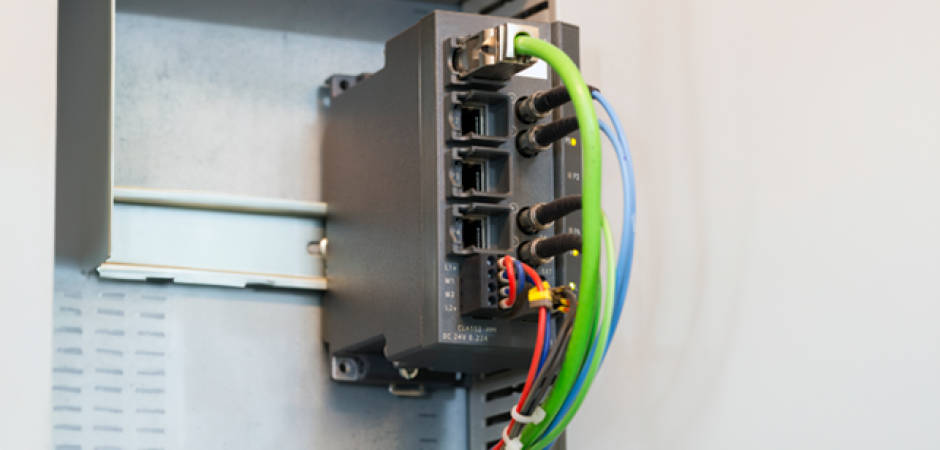
The physical connection to the Internet from a computer system or device to a router is made using Ethernet cables. They are also known as RJ45 or simply "Internet cables".
The presence of these cables has spread to homes and offices around the world. However, they are not all the same. In fact, the type of cable chosen will directly influence the volume of data and the connection speed achieved.
Ethernet cables: advantages over wireless connection
At a time when mobile phones have conquered most methods of communication, wireless seems to be the standard to follow. But it is by no means infallible.
The fact that Ethernet cables continue to be marketed worldwide is because, as long as we have a router and compatible cables in perfect condition, the connection obtained will be optimal.
Wireless connection via WiFi is dependent on the absence of environmental factors that favour interference, such as walls or that the distance does not exceed a certain number of metres. The number of connected devices also has an influence on the strength of the signal obtained. Conversely, with an Ethernet cable you are able to take advantage of 100% of your router’s capacity, but it is important that the cable has the appropriate features.
If we have a router and an Internet connection that reaches 200 Mbps, but our Ethernet cable does not exceed 100 Mbps, the latter will be the maximum speed that we will be able to enjoy. That is why it is so important to acquire Internet cables compatible with our router and of appropriate capacity.
Types of Ethernet cables currently available
When choosing Ethernet cables, whether for your home or for a company or office, it is important to know that there are different categories, currently from category 5 to 8. Each one includes cables of different performance. These are their characteristics:
Category 5 Ethernet cables
They are compatible with routers with a maximum speed of 100 Mbps, with a frequency of 100 MHz and offer a download speed of 15.5 MB/s.
Category 5E Ethernet cables
They are compatible with routers with a maximum speed of 1,000 Mbps, with a frequency of 100 MHz and offer a download speed of 150.5 MB/s.
Category 6 Ethernet cables
They are compatible with routers with a maximum speed of 1,000 Mbps, with a frequency of 250 MHz and offer a download speed of 150.5 MB/s.
Category 6A Ethernet cables
They are compatible with routers with a maximum speed of 10,000 Mbps, with a frequency of 500 MHz and offer a download speed of 1.25 GB/s.
Category 7 Ethernet cables
They are compatible with routers with a maximum speed of 10,000 Mbps, with a frequency of 600 MHz and offer a download speed of 1.25 GB/s.
Category 7A Ethernet cables
They are compatible with routers with a maximum speed of 10,000 Mbps, with a frequency of 1,000 MHz and offer a download speed of 1.25 GB/s.
Category 8 Ethernet cables
They are compatible with routers with a maximum speed of 40,000 Mbps, with a frequency of 2,000 MHz and offer a download speed of 5 GB/
How to choose the best Ethernet cables
You most probably don’t need top-of-the-line Ethernet cables to get the most out of your router and connection’s performance potential. Category 6A Ethernet cables are ideal for connections in hotels, however, for homes, they are excessive.
Yes, the information printed on the plastic sheath covering them is important, because here we see the category each one of them belongs to, and also the CPR reference (certifications regarding their flame resistance). As well as the information present on the commercial labels of the boxes used for their packaging.
Additionally, the electromagnetic shielding of the copper wires present inside is relevant. Basically, it represents the armour which is present under the plastic with which stability levels can actually be achieved.
The types of shielding available are the following, although all cables can be found with an aluminium shield, or double with aluminium + copper, which is an extra protection, to avoid interference:
- UTP (Unshielded Twisted Pair): unshielded cable, twisted cable suitable for direct connections from the computer to the router.
- FTP (Foiled Twisted Pair): system with global aluminium screen that protects twisted cables.
- STP (Shield Twisted Pair): system with copper screen and twisted cables covered with protective mesh.
- SFTP (Shield Foiled Twisted Pair): system that combines the advantages of twisted cables covered by protective mesh and extra global coverage. This cable is doubly shielded (aluminium + copper). They are mainly used to avoid electrical interference and are also recommended for long runs of cable.
If you have questions about Ethernet cables or any other type of cable you need, contact us and we will offer you personalised advice on the best products to get the most out of your current connection.

